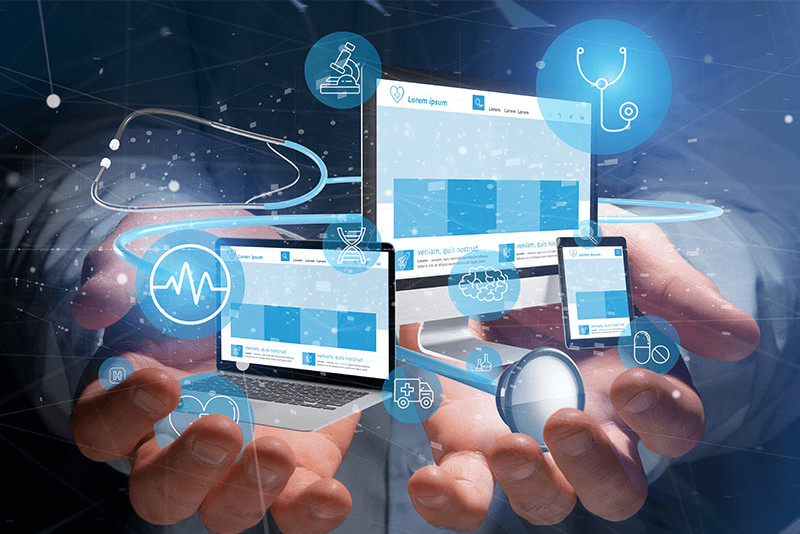
Technological advancements can help grow and strengthen your medical practice, but staying up to date on them can feel like an impossible task. This task can be made even more overwhelming with the strict regulations healthcare technology must meet. In order to ensure your technology is always up to date and keep your practice running as effectively as possible, you need a well-structured IT lifecycle management plan. This guide will walk you through the steps to create a plan that will prepare you for future technological progress.
Understanding IT Lifecycle Management
IT lifecycle management is the process of overseeing the entire lifespan of your technology assets – from planning and acquisition to maintenance and eventual replacement or upgrade. This includes managing electronic health record (EHR) systems, management software, medical devices, and network infrastructure. Proper IT lifecycle management ensures that your technology remains functional, secure, and compliant with healthcare regulations to give your patients a seamless experience.
Assessment and Planning
Before you create a plan, you need to understand how and if your current IT infrastructure meets your needs. Look at your computers and servers, networking equipment, EHR systems and management software, medical devices with digital interfaces, and security systems. Note the status and performance of all these components as well as any issues they have.
Assessing your equipment will help you identify areas in your practice that need improvement, plan for future upgrades or replacements, and ensure everything is working together efficiently. From here you can determine the goals of your IT lifecycle management plan. These could include improving system reliability, enhancing data security, ensuring regulatory compliance, and optimizing costs. Defining clear objectives helps you focus your efforts and resources on what matters most to your practice.
Now it’s time to develop a roadmap to outline the key milestones and timelines for each phase of the IT lifecycle. This should include timelines for hardware replacements, software updates, and scheduled maintenance activities. Creating a clear timeline will help you anticipate future needs and allocate resources effectively so you can minimize downtime and continue to help your patients no matter what.
Aquisition
Choosing the right technology is critical for the success of your practice as it keeps everything running. When selecting the right technology, make sure it’s compatible with your existing systems, easily integrated, comes from a reputable vendor, and meets HIPAA and other regulatory requirements. Your IT systems need to be able to handle the demands of your practice both now and in the future, so choose your technology carefully.
Developing a budget is another crucial step to any IT lifecycle management plan. Budgeting and financing allow you to plan for the financial aspects of your IT investments. It also ensures that you can afford necessary technology without compromising other areas of your practice. So, create a budget that covers the costs of acquisition, implementation, and ongoing maintenance. Consider financing options if upfront costs are prohibitive and leasing equipment if it meets your practice’s needs.
Implementation
Plan the installation and configuration of new systems carefully to minimize disruption to your practice. If possible, schedule installations outside peak hours or on weekends. Ensure that all software is configured correctly and that data migration from old systems to new ones is handled securely and accurately. Not only does this step of the IT lifecycle management plan minimize downtime, it reduces the risk of data loss and ensures smooth transition to new technology.
You will also need to invest in training for your staff so they can learn how to use the new systems effectively. Proper training reduces resistance to change and increases the efficiency of new technology adoption. It’s also important to offer ongoing support and resources to address any issues that arise post-implementation. This leads to improved productivity and better patient care since everyone knows how to use the technology to the best of their ability.
Maintenance and Support
Creating a routine maintenance schedule for all IT assets is crucial to IT lifecycle management. By performing regular software updates, hardware inspections, and security audits you can prevent unexpected breakdowns and extend the lifespan of your technology.
Utilizing monitoring tools to keep an eye on the performance and security of your IT infrastructure also helps ensure that your technology is performing optimally. This also alerts you to issues early on so you can act quickly and stop the problem before it gets worse. To ensure this, establish a support system, either in-house or through a managed service provider. This team should be able to address any issue and help maintain high levels of performance, protecting your practice from potential threats and disruptions.
Review and Upgrade
Your IT lifecycle management plan requires periodic review of the performance of your IT systems against the objectives set in the planning phase. Gather feedback from staff and patients to identify areas for improvement. Performance evaluations will also help you make informed decisions about future upgrades and replacements. This way you always have a modern guide to follow when making investments and improvements, ensuring your technology remains relevant and effective.
Technology is constantly evolving, and staying current is essential. Plan for regular upgrades to keep your system up to date with the latest advancements and security features. When disposing of old equipment, ensure that data is securely erased and that disposal methods comply with environmental regulations. This will make your practice compliant with HIPAA and benefit from the latest technological advancements.
Ready to Enhance Your Practice’s IT Infrastructure?
Creating and maintaining an IT lifecycle management plan can be challenging, but it’s essential to keep your practice running smoothly and prepare for future technological changes. Strategy Tech Services specializes in helping healthcare practices navigate the complexities of IT management. Book a conversation with us today to learn how we can help you streamline your IT operations, improve patient care, and ensure compliance with industry regulations.


